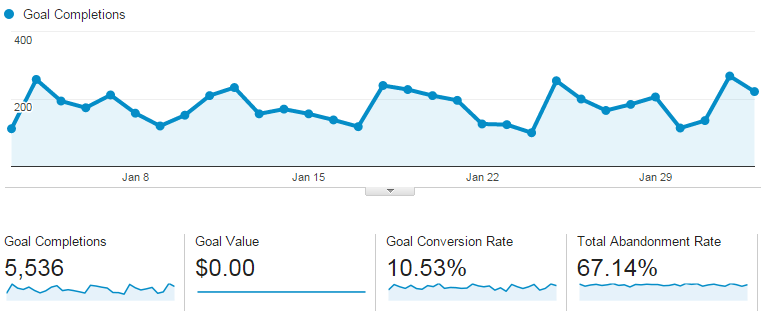What Data Is Google Analytics Goals Unable to Track and Why
What Data Is Google Analytics Goals Unable to Track and Why
Blog Article
Unveiling the Blind Spots: Understanding What Google Analytics Goals Can not Determine
In the world of digital analytics, Google Analytics stands as an effective tool for monitoring and examining on the internet customer communications. Nonetheless, in the middle of its durable capacities, there exist blind areas that commonly evade dimension. Recognizing what Google Analytics goals can not gauge is important for acquiring an extensive view of customer habits and involvement. As we explore the ins and outs of these unseen areas, we uncover a complicated internet of uncharted areas that hold useful insights into customer actions and inspirations, tough conventional knowledge and clarifying the restrictions of our data-driven understanding.
Customer Habits on External Operatings Systems
Recognizing just how customers engage on external systems is vital for maximizing online strategies. Exterior platforms, such as social media sites networks, recommendation websites, and on the internet forums, play a considerable role in driving web traffic to a company's site. By analyzing individual habits on these platforms, businesses can acquire beneficial insights into the efficiency of their advertising efforts and the preferences of their target audience.
One trick element of individual actions on external platforms is the reference source. By tracking where the individuals are originating from, services can recognize which systems are driving the most traffic to their site. This details can assist firms assign their sources better, concentrating on the platforms that produce the most effective outcomes.

Offline Conversions and Interactions
Assessing individual actions on outside systems gives important understandings into on-line methods; nevertheless, thinking about offline conversions and interactions is equally important for a comprehensive understanding of a firm's overall efficiency. Offline conversions, such as in-store acquisitions or phone questions, play a substantial function in many services' success.

Attribution Beyond Last Click
When delving into the world of electronic marketing analytics, it becomes necessary to look past the single touchpoint of the last click for a more detailed understanding of acknowledgment. While Google Analytics gives beneficial insights right into user behavior, relying entirely on last-click attribution can be limiting - what data is google analytics goals unable to track. Acknowledgment designs that go beyond the last click use an extra nuanced sight of the consumer trip, thinking about all the touchpoints that bring about a conversion
Acknowledgment past the last click enables online marketers to assign credit history to different interactions along the conversion course, offering a clearer image of the efficiency of different marketing networks. By checking out multi-touch attribution models such as straight, time degeneration, or position-based find this attribution, businesses can much better allot their advertising spending plans and enhance their techniques for optimal effect.
Understanding the impact of each touchpoint in the conversion process is essential for making educated choices and taking full advantage of ROI. By embracing attribution beyond the last click, services can acquire much deeper insights right into client behavior and tailor their advertising initiatives more effectively.
Cross-Device and Cross-Browser Monitoring

Likewise, cross-browser tracking enhances cross-device monitoring by catching user behavior as they change between different internet internet browsers. Recognizing how individuals engage with internet sites on numerous browsers can help online marketers enhance their on-line experiences to ensure consistency and functionality across various systems.
Qualitative Information and Individual Intent
Recognizing user intent via qualitative data analysis is essential for establishing targeted digital marketing approaches that reverberate with the demands and choices of the target market. Qualitative data supplies understandings into the 'why' behind individual activities, shedding light on motivations, emotions, and choices that quantitative information alone can not catch. By examining individual feedback, comments, and communications, marketing experts can discover useful details regarding user intent, permitting them to customize their messaging, material, and offerings to better straighten with what their audience is looking for.
Qualitative information also helps in understanding the context in which customers engage with a website or app. This contextual understanding enables marketers to develop even more relevant and personalized experiences, ultimately driving greater involvement and conversion prices. By delving right into user intent via qualitative data evaluation, businesses can obtain a much deeper understanding of their target audience, bring about a lot more effective advertising and marketing techniques that fulfill individuals' needs and assumptions.
Conclusion
To conclude, Google Analytics goals have restrictions in measuring individual actions on external systems, explanation offline conversions, acknowledgment beyond last click, cross-browser and cross-device tracking, and qualitative information connected to individual intent. what data is google analytics goals unable to track. It is essential for companies to be aware of these unseen areas in order to supplement their information evaluation with various other tools and techniques to obtain a more extensive understanding of their target market and boost their overall digital advertising approaches
By evaluating individual actions on these systems, companies can acquire useful understandings right into the effectiveness of their advertising efforts and the choices of their target audience.
Evaluating customer behavior on outside systems supplies beneficial understandings right into online techniques; nevertheless, taking into consideration offline conversions and communications is just as vital for a thorough understanding of a firm's total efficiency.In electronic advertising and marketing analytics, relocating past last-click acknowledgment to check out cross-device and cross-browser monitoring is crucial for obtaining an all natural understanding of customer communications throughout different platforms and tools. By analyzing user responses, remarks, and communications, marketers can reveal beneficial info regarding individual intent, enabling them to tailor their messaging, web content, and offerings to much better line up with what their audience is seeking.
By diving into customer intent through qualitative data analysis, organizations can see this gain a much deeper understanding of their target audience, leading to a lot more efficient marketing techniques that fulfill users' requirements and assumptions.
Report this page